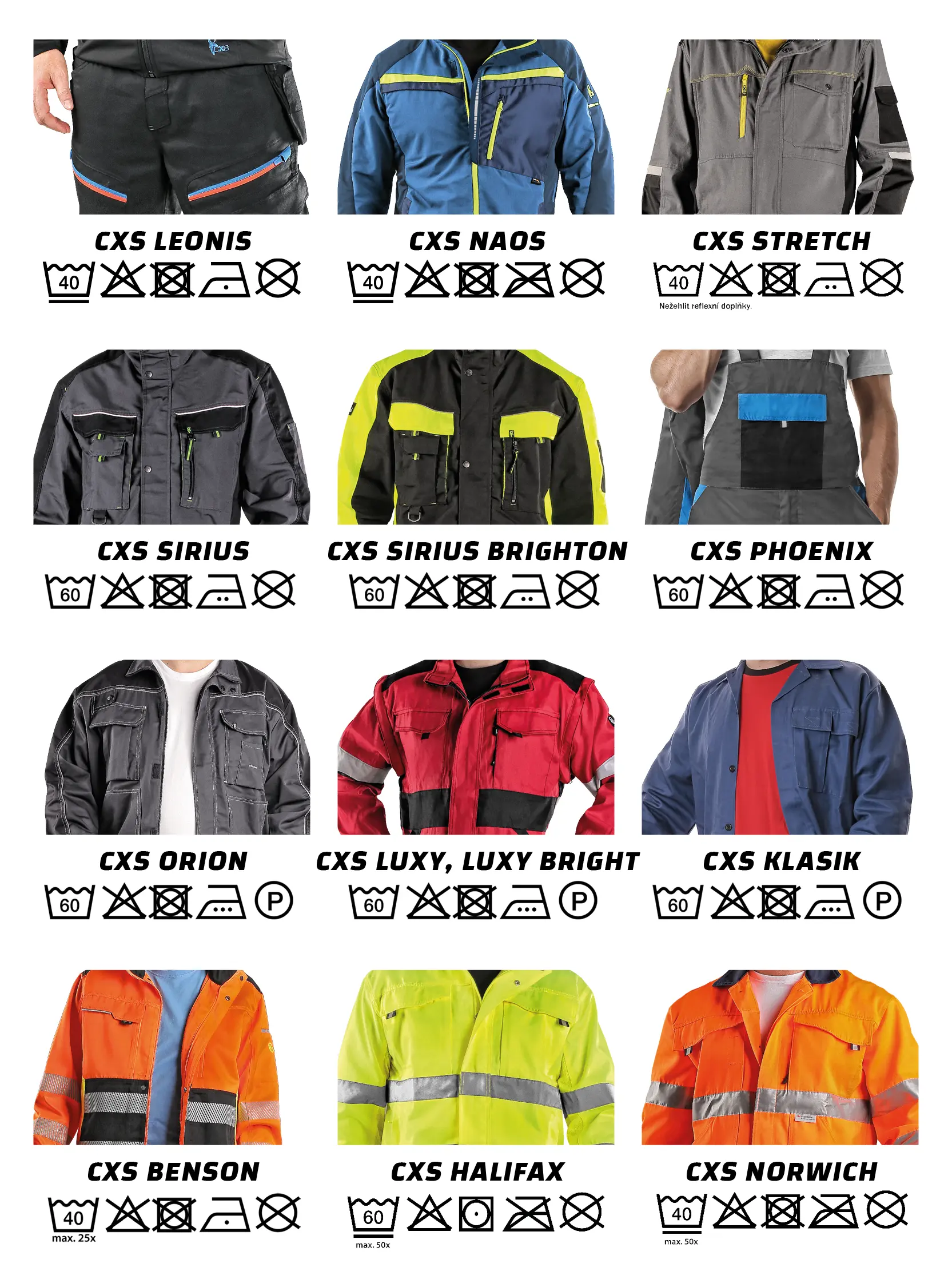Every piece of workwear has its own story. It witnesses daily toil, successes, and unexpected challenges. To ensure it can share these stories for as long as possible and in the best condition, it needs to be cared for with love and understanding. In this article, we’ve prepared some basic tips for you.
Follow the care symbols on the inner label
The care label inside your garment is a valuable guide to proper maintenance - care symbols. This small graphic tells you the maximum washing temperature, how hot your iron can be, or whether it's safe to use bleach. Ignoring these symbols can damage the material and reduce the protective properties of the garments. Have you already cut off the care label? No worries! Below, we'll remind you of the maintenance symbols for the various CXS coverall collections.

And what do each of these symbols mean exactly? Here's our guide.
Why avoid the dryer?
You've probably noticed that all care labels mention not to dry in a tumble dryer. The dryer may seem like a quick way to get clothes from the washer to the wardrobe, but also straight to the trash. Due to high temperatures and mechanical motion in the tumble dryer, it can damage fibers, especially elastic ones, altering the fabric's structure and the overall appearance of the garment. An alternative is to air dry the garment, which is a gentler method for both the fabric and your wallet.
Wash before first use
It may sound odd, but the first wash removes all residues from the manufacturing process and prepares it for wearing. It's a sort of reset that allows the materials to breathe and adjust to optimal functionality.
Soaking heavily soiled workwear
As a result of hard physical labor, workwear can understandably become extremely dirty. In such cases, we recommend soaking the garment for a few hours in lukewarm water with a bit of detergent. This helps loosen tough dirt and makes subsequent washing easier. Moreover, it prevents dirt from clogging the washing machine.
Fabric softeners? No, thanks.
Fabric softeners generally make the fabric feel softer to the touch. However, their negative effect arises when they accumulate on the fabric, reducing the garment's ability to absorb moisture. This is exactly what we want to avoid as one of the functions of workwear is its breathability and absorbency.
Laundry gel: liquid gold
When choosing between classic laundry powder and gel, we definitely opt for the gel. Laundry powder, due to its structure, has an abrasive effect—gradually scraping off parts of the fabric, thus accelerating the wear of the garment.
Elastane needs gentle care
Elastane is a popular material component for its elasticity, as it allows garments to accommodate a greater range of movement. However, if elastane is included in the material, gentler handling methods are needed, especially during spinning. We recommend setting the spin cycle to a maximum of 1000 revolutions per minute to avoid damaging the elastane fibers.
Zip up before washing
A significant preventive step is to zip up all zippers before placing garments in the washing machine. When a zipper is closed, it maintains its shape and is less likely to be damaged during washing as it prevents bending or even breaking of the teeth. This step also protects other laundry in the machine from being scratched, tangled, etc.
Reflective elements: friends with light, not with the Iron
Reflective elements on workwear are essential for safety in the workplace because they reflect light back to its source, thus increasing the visibility of the wearer in poor lighting conditions. However, it's important to remember that these elements are highly sensitive to heat. Ironing reflective elements can cause them to melt, deform, and ultimately lose their ability to reflect light. Therefore, it is advisable to avoid ironing reflective additions.
Lastly, it is crucial to study the user manual that comes with your workwear. In the manual, you will find additional specific advice concerning the particular product and its maintenance. If the manual has also been discarded, you can find it on our e-shop on each product page under the Documents tab.
Remember, proper care for workwear is an investment not only in its lifespan but also in your daily comfort and safety at the workplace.





